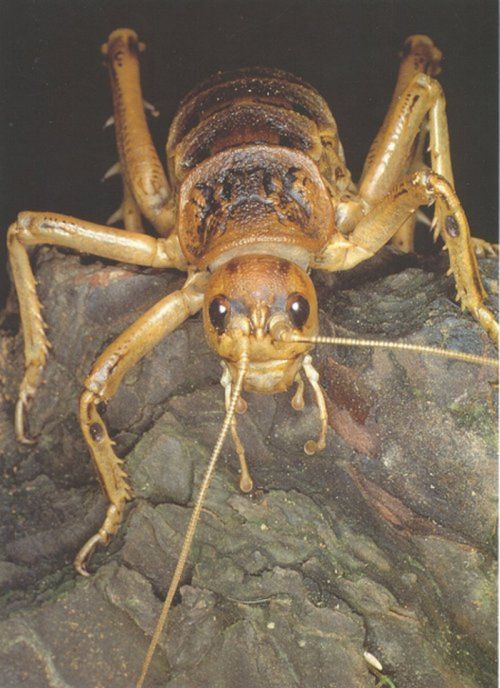|
|
Giant Weta
|
General characteristics
Many weta are large by insect standards and some species are among the largest and heaviest in the world. Their physical appearance is like a katydid or long-horned grasshopper or a cricket, but the hind legs are enlarged and usually very spiny. Many are wingless. Because they can cope with variations in temperature, weta are found in a variety of environments including alpine, forests, grasslands, caves, shrub lands and urban gardens. They are nocturnal and all New Zealand species are flightless. Different species have different diets. Most weta are predators or omnivores preying on other invertebrates, but the tree and giant weta eat mostly lichens, leaves, flowers, seed-heads and fruit.
Weta can bite with powerful mandibles. Tree weta bites are painful but not particularly common. Weta can inflict painful scratches, with the potential of infection, but their defence displays consist of looking large and spiky, and they will retreat if given a chance. Tree weta arc their hind legs into the air in warning to foes and then strike downwards so that the spines could scratch the eyes of a predator. Pegs or ridges at the base of the abdomen are struck by a patch of fine pegs at the base (inner surface) of the legs and this action makes a distinctive sound. These actions are also used in defence of a gallery by competing males. The female weta looks as if she has a stinger, but it is an ovipositor, which enables her to lay eggs inside rotting wood or soil. Some species of Hemiandrus have very short ovipositors, related perhaps to their burrowing into soil and laying their eggs in a special chamber at the end of the burrow.
|
|









